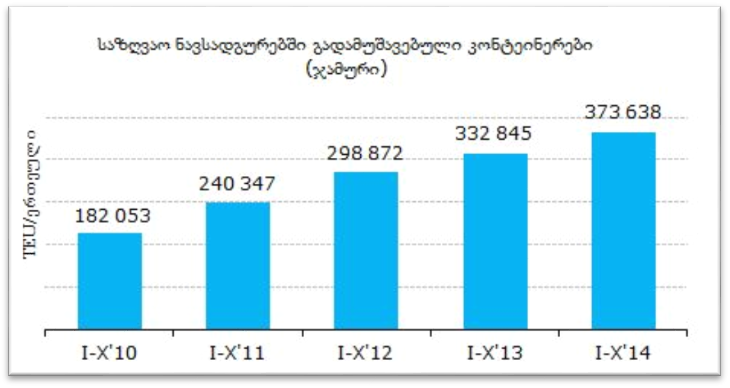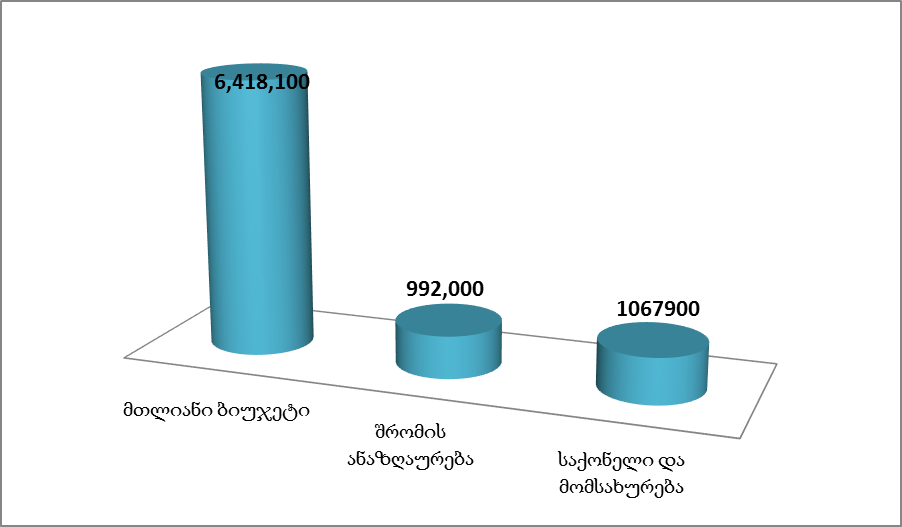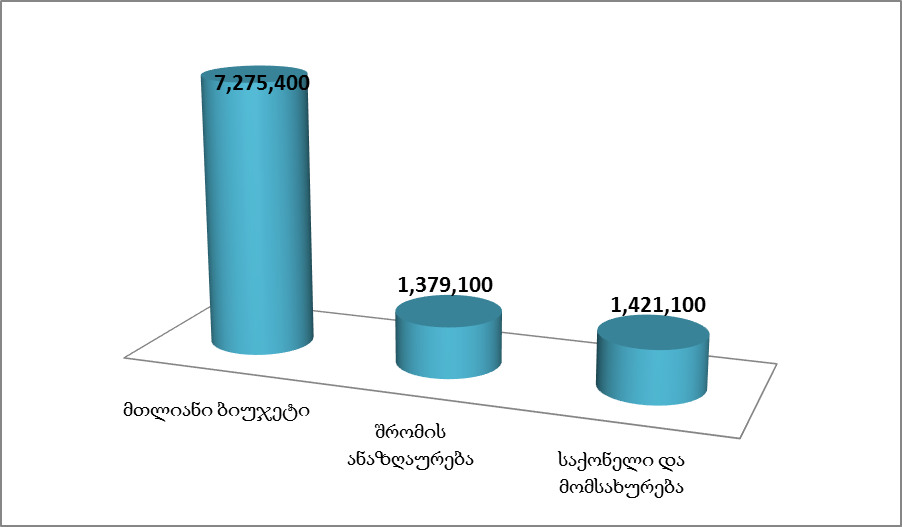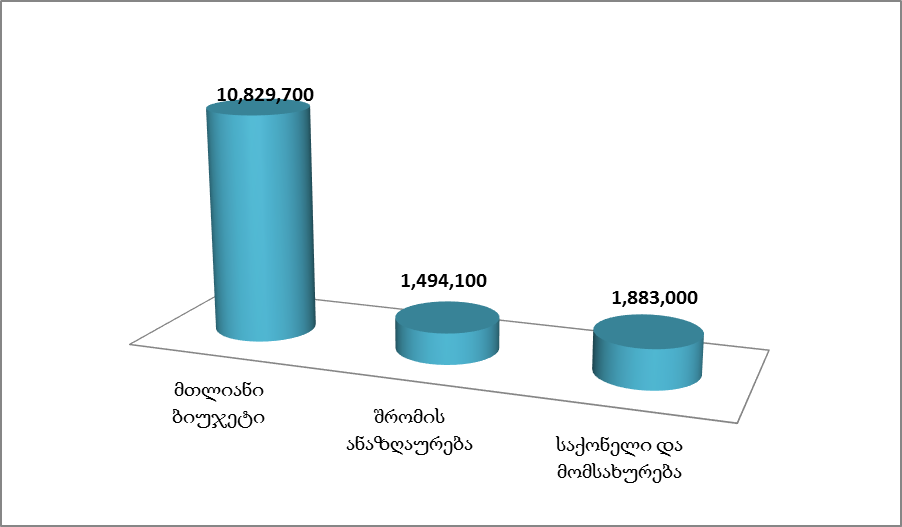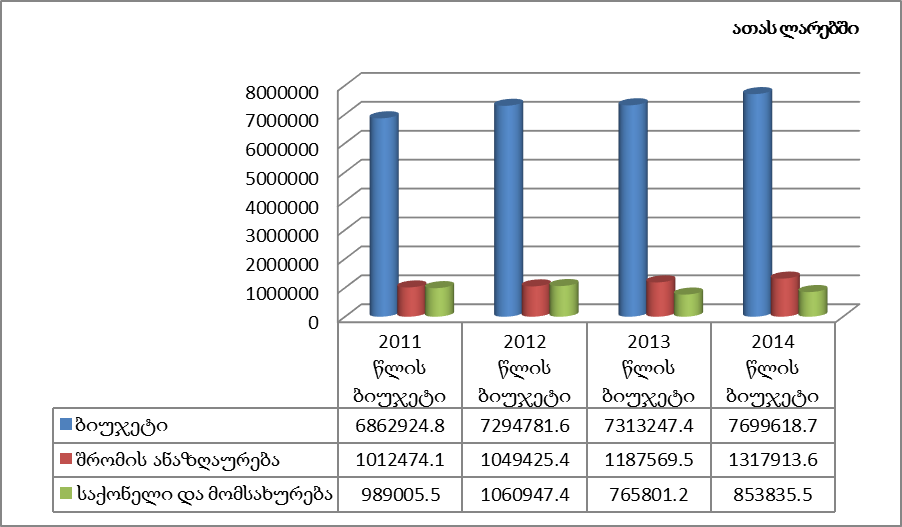On 29 November 2014, Prime Minister of Georgia, Irakli Gharibashvili, gave a speech at the International Investment Forum and introduced Georgia’s economic potential to the delegates. Mr Gharibashvili spoke about various economic and infrastructural projects in the framework of the Forum. He noted Georgia’s transport potential as well and highlighted that the demand on Georgia’s ports has significantly increased. More precisely, container transportation increased by 18% in the first eight months of 2014 as compared to the same period of the last year.
FactCheck took interest in the accuracy of Mr Gharibashvili’s statement and verified it.
The website of the Ministry of Economy and Sustainable Development pictures the statistical data of the revenue received from transportation in 2010-2014.
Graph 1: Containers Processed at Seaports (Gross)
As the statistical data show, the number of the containers processed at Georgia’s seaports has been increasing since 2010. In the first ten months of 2011, 32% more containers were processed as compared to 2010. In the first ten months of 2012, 20% more containers were processed as compared to the previous year. The number of containers processed increased in 2013 as well, although the increase rate decreased and amounted to a modest 11%. In 2014, there was an 11% increase as well. The number of containers processed at Georgian seaports has been increasing since 2011; nevertheless, the increase rate went down.
According to the data of the Ministry of Economy and Sustainable Development (Graph 2), the number of containers processed in the last four years at the Poti seaport has been increasing. An approximately 17% increase was recorded in 2014 as compared to the last year. As for the number of containers processed at the Batumi seaport, it shrank by 19% as compared to the last year.
Graph 2: Containers Processed at Seaports
The website of the Ministry of Economy and Sustainable Development also shows the number of processed cargo and transported passengers.
Graph 3: Processed Cargo and Transported Passengers (Gross)
The amount of cargo transported at seaports and terminals in the first ten months of 2014 decreased by 5% as compared to the same period of the last year. It is noteworthy that the gross number of processed cargo has been decreasing from 2010. The trend did not change in 2014 as well. As for the number of passengers transported, it increased by 3% as compared to the last year.
Graph 4: Passengers Transported by Transport Sector (Gross)
Even though the number of containers processed at seaports has increased, the total number of cargo transported by Georgia’s transport sector has been decreasing since 2012 (Graph 5).
Graph 5: Cargo Transported by Transport Sector (Gross)
Conclusion
As there are only ten-month (not eight-month) data available on the website of the Ministry of Economy and Sustainable Development, we verified the Prime Minister’s statement based upon this data alone. Mr Gharibashvili is correct whilst speaking about the increase in the number of containers processed at Georgia’s seaports. Nevertheless, the rate of processing the containers increased by 11% in the first ten months of 2014 as compared to the same period of the last year and not by 18% as the Prime Minister noted. Moreover, the increase rate of processing the containers has decreased as well.
It is noteworthy that the total number of cargo transported in the period of 2010-2012 was increasing, although the number has been shrinking for the last two years. The number decreased by 4% in 2013 and by nearly 3% in the first ten months of 2014 as compared to the same period of the last year. Remarkably, only a numerical increase in the number of processed containers does not define the full trend of the transport sector. The number of the cargo transported and the long-term percent increase are equally important. According to the data of the Ministry of Economy and Sustainable Development, less cargo was processed in the country this year as compared to the last year.
FactCheck concludes that Mr Gharibashvili’s statement is HALF TRUE.

“The demand on Georgia’s ports has increased… Container transportation has increased significantly in recent years.”
22/12/2014
Half True
The statement is partly accurate, but the details are missing or some of the issues are without context
Persons
-

“Caring for emigrants is a priority of o...
FalseThe statement is inaccurate -

“The average teacher salary increased by...
Mostly TrueThe application is accurate, but requires additional information and/or definition -

“Passenger traffic at airports has incre...
Mostly TrueThe application is accurate, but requires additional information and/or definition

